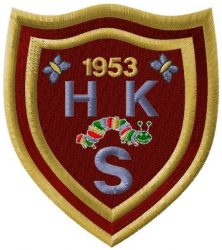We have come to the end of another short but very busy week for pupils and staff. All pupils were issued with an annual report card which provides information on progress and achievement. The response sheet allows both parents and pupils to provide feedback for the school and we would appreciate if these could be returned next week.
Class Organisation
The teachers and leadership team are working together to organise classes for next session. There is often some anxiety about the process and questions about how we reach decisions about how a class group is made up. Many parents have already approached me to ask if classes / teachers have been identified for next year. We are working through the process for this and I anticipate class groups will be shared by 12th June. Please bear in mind that teachers move between stages and it would be helpful if you could discourage your children from assuming who their teacher(s) will be based on the stage they are teaching this year.
I would like to take this opportunity to provide an outline of the process at our school.
- The first step is always to review our school roll with South Lanarkshire Council. Colleagues at Headquarters advise us of the number of classes and teachers for the following session. This process takes place from January – May and often changes as new families move into or out of the area.
- The identification of teachers taking Primary 1 classes is always shared earlier so that visits to partner nurseries and induction processes can take place. Miss Houldsworth and Miss A. Harris will teach Primary 1 pupils next year.
- Our classes are organised initially using literacy working groups as a guide. Pupils who are attaining similar levels of literacy and working at a similar pace will progress as a group. This means pupils from two different classrooms may come together to form a group for the following year.
- We then consider how each class is made up using the size of the groups as a guide along with our knowledge of the pupils. Groups going into composite classes are not identified because children are not working at the expected levels. For example, if your child is a P3 pupil and placed in a composite P3/2 class, this is not because they are struggling with learning and require to revisit concepts taught in P2. Similarly, if you have a P2 pupil going into a P3/2 composite class, this is not because they require the challenge of the P3 curriculum.
- Finally, we consider the draft classes to ensure no pupils are separated from all of their friends or socially isolated. Current class teachers flag up any issues using their knowledge of pupils and social groups and small tweaks are made.
- Class lists are then finalised and shared.
This process takes place every year and we spend a lot of time ensuring that the class groups are organised to provide the best opportunities for learning and teaching at each stage. I trust that you recognise that the robust process means we have fully considered your child’s learning and social needs and made a professional decision about classes.
Further information is available using the following link:
https://www.southlanarkshire.gov.uk/downloads/file/853/composite_classes
Team Teaching Mathematics
Next year there will be a change to the way numeracy and mathematics is taught across the school.
Where a year group is made up of more than 33 pupils, two teachers will be assigned to the year group to teach maths. Children will be organised into working groups (children working at a similar pace and level) and each teacher will have responsibility for two groups. Please note that we are setting maths groups within a cohort (e.g. all Primary 3) but will not be setting across multiple stages (e.g. P6 will not be taught with P7).
There are many benefits of this approach to support attainment in numeracy and mathematics:
- Each teaching group will be smaller than the total class size. For example, your child may be in a class of 33 pupils but a maths teaching group of 25 or less.
- We recognise the differences in pupil attainment in literacy and maths. A pupil who is placed in a class because of their attainment level in literacy has access to the challenge or support of a different maths group.
- Teachers have increased teaching time for each group.
- Pupils will benefit from a structured timetable for mathematics and progressive teaching resources and can move between groups if they make accelerated progress or require additional support.
Further information will be provided before the end of term through a parent information leaflet.
What’s on next week?
Tuesday – Learning Community Meeting (HT out all day)
Thursday – Mrs Spence and 4 pupils attending Singing Day
Friday – Primary 3 attending Scottish Opera
Thank you for your continued support
Kind regards
Kirsty Duff


